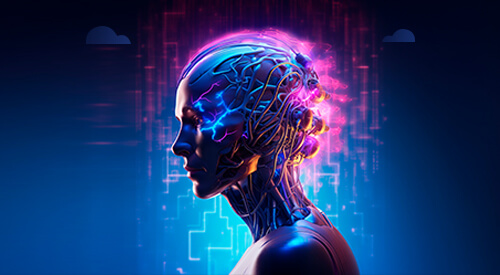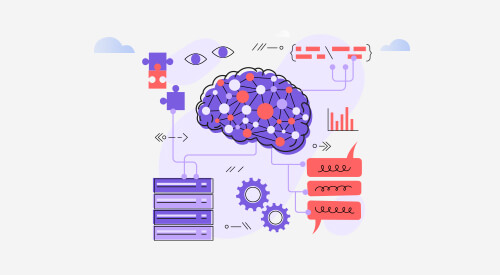

DataOps has been emerging prominently as an intersection between the cloud, data, and agile application development. It is furthering quickly within the cloud arena as the industry becomes closely integrated with AI, machine learning, and analytics. DataOps has also been a key component of building applications with CI/CD platforms for delivering new digital experiences. Google Cloud provides a number of tools for implementing CI/CD platforms, including Cloud Build, Artifact Registry, and Vulnerability checks, SonarQube integration. Here, we’ll take a look at how these tools can be used together to automate the CI/CD process.
Automate your CI/CD processes for a modernized development environment
The role of CI/CD platforms
Continuous Integration and Continuous Deployment (CI/CD) is a software development practice that involves automatically building, testing, and deploying code changes to various environments. The goal of CI/CD is to quickly and efficiently deliver high-quality software to users while minimizing the risk of errors and downtime.
DataOps has become the buzzword for describing the approach where data scientists and software engineers work together and use services such as those offered by Google Cloud Platform to build data driven applications for organizations. The goal is to build applications quickly, at low cost and without sacrificing quality. This includes building CI/CD platforms for faster pipeline development.
A CI/CD platform is essentially a service that has combined software development methodologies with the usage of a platform. It includes many different tools and resources that are used to develop software. CI/CD platform services are used to enable developers to share code, track defects, identify how long a new feature or change will take to develop, and many other uses.
The importance of CI/CD platforms
- Streamlines development process: CI/CD facilitates an automated and streamlined development process which can improve efficiency and speed up the development cycle. For example, with CI/CD in place, developers can work on different features at the same time and the process can automatically build, test and deploy the code, without manual intervention.
- Automates build, test and deployment: CI/CD automates repetitive tasks like building, testing, and deploying code which can reduce errors and accelerate delivery of new features.
- Facilitates team collaboration: CI/CD facilitates collaboration and communication among developers by providing early feedback on code changes. For example, if a developer pushes a change to the codebase, CI/CD will automatically run tests and notify the developer via email/slack if any issues are found in specific environments. This allows developers to address and fix issues more quickly and efficiently.
- Allows for quick rollback: CI/CD allows for quick rollback in case of issues during deployment to production. For example, if a new release causes issues in production, CI/CD allows a quick rollback to the previous version using Artifact Registry, minimizing downtime and ensuring continuity of service.
The Architecture
The workflow
GitHub/GitLab Integration: The first step in the CI/CD process is to check out the code from a source control repository, such as GitHub. This is where Cloud Build comes in. Cloud Build can be configured to automatically check out the code and build it using the specified build configuration.
SonarQube Integration: Once the code is built, it’s important to perform a thorough analysis to ensure that it meets quality standards. This is where SonarQube comes in. SonarQube provides a complete report on JUnit tests and any code improvements that need to be made.
Artifact Registry: The next step is to create a Docker image of the built code. Cloud Build can be configured to automatically build the Docker image and push it to the Artifact Registry. This allows teams to easily roll back to previous versions of the code if necessary.
Vulnerability Scan: After the Docker image is pushed to the Artifact Registry, it’s important to perform a vulnerability scan to ensure that the image is secure. Cloud Build can be configured to automatically scan the image for vulnerabilities and trigger an email if any critical or high issues are found. By automatically failing the build process when critical issues are found, teams can quickly identify and address any security concerns before they become a problem. This can save time and resources in the long run, as well as providing peace of mind knowing that your application is as secure as possible.
Deploy the build: Finally, the last step is to deploy the code. In this example, we’ll deploy the code to Composer. Cloud Build can be configured to automatically deploy the code to Composer, ensuring that new features and bug fixes are available to users as soon as possible.
Jira/AzureBoard Integration: You can also connect Microsoft AzureBoard / Confluence Jira to GitHub. One of the main benefits of connecting Azure Boards or confluence Jira to GitHub is that it allows teams to link code commits, pull requests, and branches to work items, such as user stories, tasks, and bugs. This makes it easy for developers/business to see which code changes are related to specific issues and for managers to track the progress of work items.
In conclusion, CI/CD is a powerful software development practice that can help teams deliver high-quality software quickly and efficiently. Niveus has extensive experience building CI/CD platforms with Google Cloud Platform. Google Cloud provides a number of tools, including Cloud Build, Artifact Registry, and Vulnerability scan etc, that can be used together to automate the CI/CD process. With DataOps, you can automatically provision and manage your data infrastructure, build and test your data pipelines, and deploy your applications with confidence. Using these tools, teams can catch and fix issues early, reduce the risk of errors and downtime, and improve the overall user experience.









